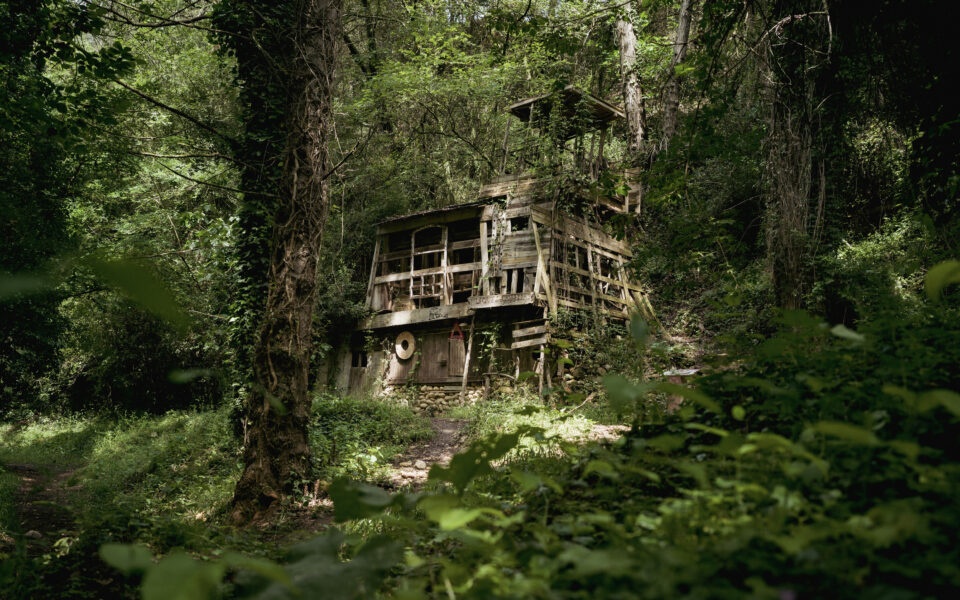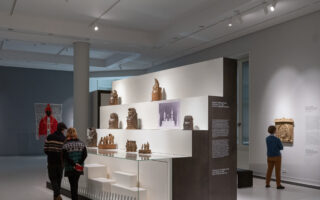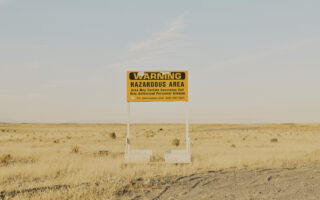Concrete daisies? There’s a fine for that

SANT FELIU DE GUÍXOLS, Spain – On a recent afternoon, Jo Farb Hernández, a Californian folklorist and curator, was admiring the bizarre structure that stood before her near Spain’s border with France. Flowerlike concrete appendages rose to the sun, bejeweled with glass, marbles and shards of old pots. Broken tiles were cemented into intricate mosaics called trencadís – the stuff Antoni Gaudí once made famous in Barcelona.
But unlike Gaudí, the creator of this construction had no training in architecture, art or engineering. He had no permits to build much of it, either. And for years, local officials have been levying fines against the site.
“Why does the city have to mess with this guy?” asked Hernández, exasperated.
The art world has long kept a place at the table for so-called “outsider art.” Works by painters with no formal training get special auctions at Christie’s. New York has had an art fair devoted to outsider artists since the 1990s, which welcomes art by children, prisoners and a wide variety of others.
But is there such a thing as outsider architecture? Hernández, an emerita professor of art history at San Jose State University, thinks so, and has spent much of her career documenting – and at times defending – the work of self-taught builders in Spain who come from outside the establishment.
They include people like Justo Gallego Martínez, a former monk who spent most of his life building a 125-foot-tall cathedral – almost single-handedly, and with no funding from the Roman Catholic Church – before he died in 2019. Or Antonio Cervantes García, a man from the Catalonia region who was diagnosed with schizophrenia, and created a space out of concrete and found objects to keep his demons at bay. As a young man in the 1920s, Cesáreo Cardín Villa discovered a Neolithic cave near his town in Asturias filled with ancient paintings. In the decades after, he recreated them in an existing cave below his home – though until his death, he told visitors that they were real.
Despite the curious stories behind these spaces, there is no market for them. Art collectors don’t usually buy them – they can’t even move them in most cases. The cities where they sit, often worried about zoning ordinances and safety codes, rarely offer to preserve them. And many of the builders, troubled souls themselves, have struggled to gain the support of their family in their endeavors, or, in many cases, to even recognize them as artists.
That left a situation in which “the field of art history itself has ignored an entire swath of human creativity,” said Hernández. “The question here is: What is art?”
One answer seemed to be standing directly in front of Hernández that day near the French border as the hermit who owned the bejeweled house came out to greet her and a reporter.
“My name is Ratpenat, which means ‘Bat’ in my language,” said Josep Almar i Pujol, a tall man in his early 70s who speaks Catalan and lives alone in the structure.
Almar first explained the origin of his nickname: He took the name of a bat because he works at night and thinks of himself as a “humble animal who doesn’t need to fly high.” He had been working on his structure for decades, he said, adding concrete flowers, serpents and the faces of elves to create a mythology of his own devising. On the rooftop, Almar pointed to concrete figures depicting Saint George and the dragon, a Christian myth that remains central to Catalan culture.
Years ago, his family had decamped, he said, not wanting to live in his art project. But he’s also faced troubles from the city in the form of notices that the structure was illegal, and fines, which he reluctantly paid.
“There’s always some bureaucrat asking: Do you have a permit to build that 13-meter dinosaur?” said Hernández, referencing a spat between officials and another artist she worked with who had built a 40-foot tall Tyrannosaurus rex replete with a voice box so it could roar.
Hernández said she hopes her work in documenting the site will coax city leaders to ease up on Almar and others. His property is one of 99 sites cataloged in her book, “Singular Spaces II,” which was released this month. (The book’s first edition, “Singular Spaces I,” featured 45 Spanish artists.) The books also document Hernández’s 23-year journey in finding the sites, almost all of them unknown to the mainstream art world before her visits.
Hernández is not above taking direct action to defend the artists she studies.
On a recent Saturday, she parked along a highway then walked through a wheat field and down into a ditch. Someone had turned the culvert there into a kind of sculpture garden that looked like something from the “Mad Max” series: rusting towers lining the sides of the ditch, cairns cobbled together from river stones and cement, unidentifiable figures made of unidentifiable pieces of machinery.
It was the work of Josep Pujiula i Vila, a former textile factory worker who went by the nickname “Garrell” and worked at the site from the 1980s until his death in 2016.
Hernández visited an earlier version of the site, consisting of wooden towers and a labyrinth, in the early 2000s, only to see it ordered demolished by the government when a highway was constructed, in 2002. After Pujiula built another version and it was ordered dismantled, Hernández began an international petition in 2013 to protect the site, gathering more than 1,100 signatures including that of Roger Cardinal, the English art scholar who coined the term “outsider art.”
“I’m the outsider here – I don’t speak the language perfectly and I’m not from the village,” she said, “but sometimes people hear me out.”
In Pujiula’s case, the intervention had mixed results. The site was demolished again, but it did seem to change how the city saw his work going forward: When Pujiula died after creating a final version of the site, village officials, pressured by residents, let it stand. In fact, the city has now erected signs explaining the polemical history of the site, with information about its builder.
Besides the sculpture garden, visitors can view Pujiula’s “pharaonic tomb” which the artist carved into the mountainside and where some of his ashes were scattered (“Garrell, the most stubborn” says an inscription he wrote in Catalan), and a wooden structure Pujiula built as a mausoleum for his defunct car, a Renault 4.
On another day, Hernández visited the home of Manuel Ollés Andreu, one of the builders featured in her book, who was eager to get a copy. Behind him was his house, which he had decorated seemingly endlessly in mosaics and sculptures that told the story of his life, from his childhood in a village in Arágon to the birth of his grandson.
“I don’t use plans,” Ollés said, proudly. “Gaudí had plans, but he didn’t lay down the stones on his buildings.”
Ollés had truly created a work of art in his home, Hernández said, and so far the neighborhood seemed to agree.
But, she added, jokingly, “there are a few of these places I wouldn’t want to live across the street from.”
This article originally appeared in The New York Times.






